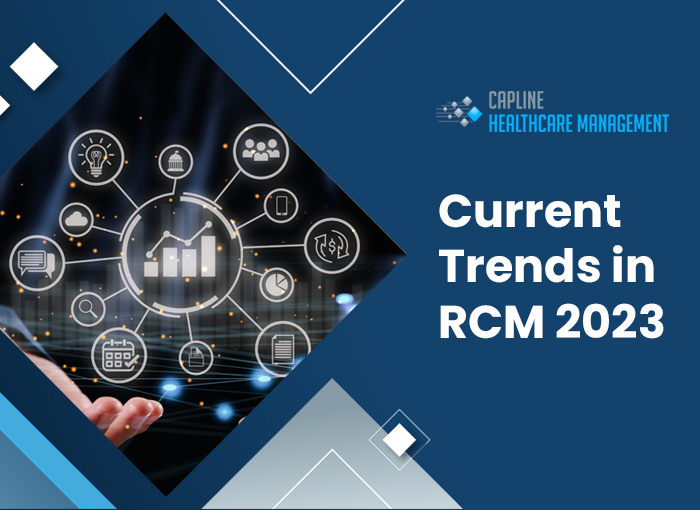Current Trends in RCM 2022
The healthcare industry is one of the most complex sectors, which is also constantly in a state of flux. Each year, new things come out of the bag as technology finds its way right from the operating room to the back office.
There have been many healthcare improvements, yet the back office revenue in almost all practices remains stagnant. The revenue cycle trends are not changing much; the same goes for the KPI (Key Performance Indicators). The cost to collect has remained the same, and now, adding to the chaos, the healthcare staffing challenge is not making things easy any time soon.
Challenges Stemming From Covid-19
When the pandemic hit, it thrust the world into a pit of unwilling changes. The staffing challenges doubled because of the infamous ‘Great Resignation’. It is no surprise when healthcare organizations across the United States say the work and the claim volumes are now more erratic.
All thanks to the pandemic, which flipped healthcare onto its head, demand for automation increased with a dwindling workforce. 2022 has been a year of flux, to say the least, when it comes to the revenue cycle departments- not only in healthcare but everywhere else.
Staffing challenges keep on getting worse.
Staffing challenges in healthcare are not breaking news. But since the pandemic and the ‘Great Resignation’, 2022 witnessed and is still witnessing an essential change in the staffing adjustments in the revenue space.
When the pandemic made adequate staffing impossible, healthcare systems could not get all the staffing required to complete the work. So, they had to change things and the way these things work. The repetitive tasks had to be eliminated, and the minimal available staff had to be utilized for the most cognitively demanding tasks.
Making these improvements not only assist the healthcare industry in handling the current personnel issues, but it is also aiding our industry’s transformation and delivery of a fundamentally better healthcare experience in the future. This pandemic is the crucible in which healthcare leaders can define their legacy and lay the groundwork for an AI foundation that will position their health systems for success for decades.
As the “Great Resignation” continues, COVID-related staffing issues will persist. As these staffing issues persist, healthcare organizations will continue to consider automation as one of the most outstanding solutions. That will almost certainly lead to increased automation vendors and scrutiny over which ones are the best.
Technology is going to be more capable and much more critical
One thing that Covid-19 could not slow down was the pace of technological advancements. Automation is now increasingly popular, with health systems jumping usage from 66% to 78% in just a year.
Cloud computing is widely available, and healthcare organizations frequently have tech stacks that match those seen in marketing. These technical bells and whistles have become unavoidable in the income space. In 2023, healthcare revenue cycle leaders will continue to look for tools and technological solutions that will empower revenue cycle teams to become patient advocates while reducing time to collections.
Technology can perform data-intensive activities, allowing healthcare RCM teams to focus on complex claims and collaborate with patients and their families to negotiate the shifting payor landscape.
A better patient-focused revenue cycle
Another trend here for good is an increased focus on the patients. With the No Surprise Act, patients are in for a better billing experience, which means that the revenue departments will be on their toes.
With automation improving the revenue space, most of the revenue cycle will be automated. It might allow revenue specialties to grow in better patient advocates that ensure there are no ugly billing surprises, and the workflows will remain pretty constant.
The revenue cycle is the invisible motor that drives healthcare. It is the foundation for ensuring that patients receive the full benefit of their coverage and receive an accurate bill the first time. The revenue cycle allows for avoiding unexpected medical expenditures and provides price transparency. Organizations reframe the revenue cycle as a patient advocacy organization rather than a back-office function will emerge as leaders in 2023.
A Successful Revenue Cycle with Capline Healthcare Management
Nobody knows what 2023 holds in store for us, but one thing is clear- automation will play a role.
For decades, revenue cycle operations have faced the same staffing issues, which have only grown in recent years. As hospitals suffer personnel shortages and patients encounter billing cycle delays, efficiency is becoming increasingly critical. With fewer hands available to do the work, you must reconsider how processes can be more efficient.
That is where we come in. Capline Healthcare Management combines automation and experience to streamline effective revenue cycle procedures and provide relief to your personnel in the current year and beyond. To withstand the current challenges and keep up the pace with the trends, you will need a partner to keep you strong- and we are right here. Just a call away.




